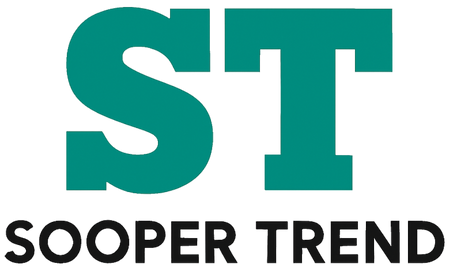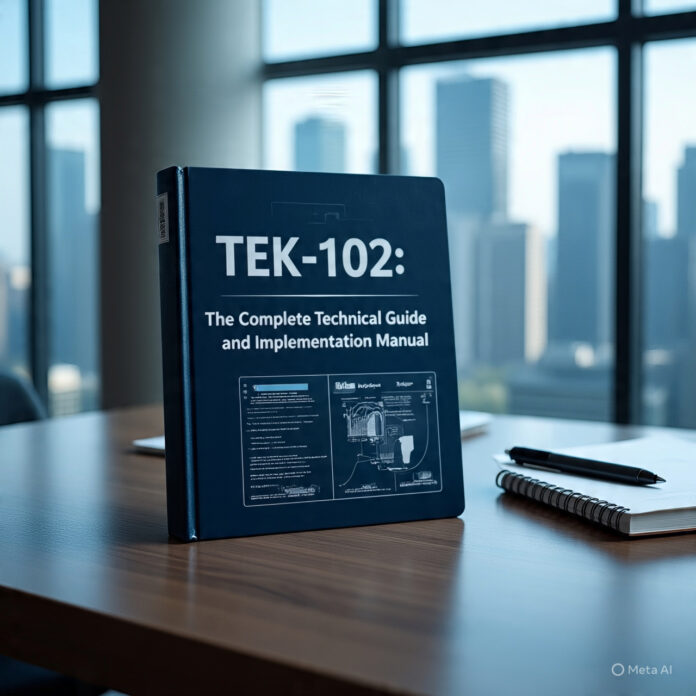Contents
- 1 Introduction
- 1.1 Understanding TEK-102 Core Architecture and Specifications
- 1.2 Key Features and Advanced Capabilities
- 1.3 Installation and Setup Procedures
- 1.4 Operational Best Practices and Optimization
- 1.5 Troubleshooting and Maintenance Guidelines
- 1.6 Integration Strategies and Future Considerations
- 1.7 Conclusion
- 1.8 Frequently Asked Questions
Introduction
TEK-102 represents a enormous development in modern era answers, presenting greater performance, reliability, and flexibility for numerous commercial and industrial applications. As corporations increasingly are seeking green and cost-effective technical answers, know-how the abilities and implementation strategies of TEK-102 becomes critical for staying competitive in ultra-modern fast-paced market.
This complete guide affords distinct insights into TEK-102’s functions, packages, and best practices for deployment. Whether you’re a technical professional comparing new structures, a assignment manager planning implementation, or a business leader in search of to apprehend the strategic fee of TEK-102, this article will equip you with the expertise had to make informed choices and acquire ideal outcomes.
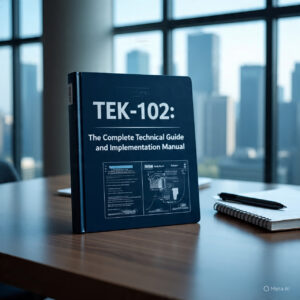
Understanding TEK-102 Core Architecture and Specifications
TEK-102 is constructed on a robust architectural basis that prioritizes scalability, performance, and integration abilities. The machine capabilities advanced processing abilties with multi-middle structure, making sure green managing of complex operations and excessive-extent information processing requirements.
The technical specifications of TEK-102 include stronger memory management systems, optimized strength consumption protocols, and superior safety features that meet industry requirements. The modular design permits for flexible configuration alternatives, allowing businesses to customise the device in line with their particular operational needs.
Key architectural additives consist of the primary processing unit, incorporated communication modules, and adaptive interface systems. These components work collectively seamlessly to supply constant performance across various running situations and application eventualities.
Key Features and Advanced Capabilities
TEK-102 offers a complete suite of functions designed to deal with modern-day technical challenges. The system includes real-time monitoring abilities, computerized diagnostic capabilities, and sensible optimization algorithms that continuously enhance overall performance based totally on utilization styles.
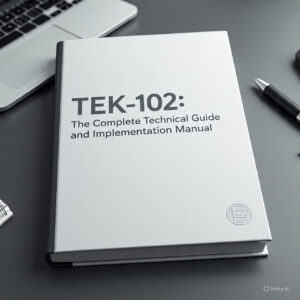
Advanced records processing competencies permit TEK-102 to deal with complicated analytical duties with notable performance. The device supports a couple of information codecs and protocols, ensuring compatibility with present infrastructure and 1/3-birthday celebration programs. Built-in redundancy functions provide more suitable reliability and minimize downtime dangers.
Installation and Setup Procedures
Proper installation of TEK-102 calls for careful planning and adherence to installed protocols. Begin through accomplishing a thorough web site assessment to make sure most reliable placement and environmental situations. The installation place ought to meet unique temperature, humidity, and ventilation requirements.
Pre-set up arrangements consist of verifying energy requirements, community connectivity alternatives, and compatibility with current structures. Create specified set up schedules that minimize operational disruption and allow ok time for trying out and validation techniques.
The installation system includes several important stages: hardware setup, machine configuration, network integration, and comprehensive checking out. Each stage calls for particular information and cautious documentation to make certain a success deployment. Post-set up procedures encompass device calibration, user training, and established order of renovation protocols.
The person interface has been designed with intuitive navigation and comprehensive control options. Advanced users can access precise configuration settings, whilst preferred operators can manipulate ordinary functions through simplified interfaces. Remote control capabilities permit for efficient gadget administration and troubleshooting.
Operational Best Practices and Optimization
Maximizing TEK-102 overall performance requires enforcing verified operational excellent practices. Establish normal monitoring schedules to track device performance metrics and identify ability problems earlier than they effect operations. Create standardized processes for habitual maintenance and gadget updates.
Optimization strategies include quality-tuning configuration settings primarily based on particular usage patterns, enforcing efficient records control practices, and maintaining most effective operating situations. Regular performance assessments help pick out opportunities for development and make sure persisted performance.
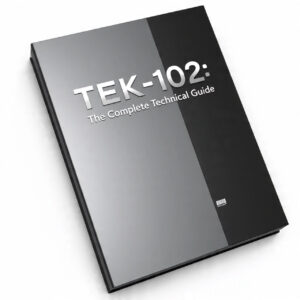
User education plays a critical position in operational achievement. Develop comprehensive schooling applications that cowl both basic operations and advanced capabilities. Establish clean protocols for machine get entry to, data handling, and emergency strategies. Regular refresher schooling guarantees persisted competency and system safety.
Troubleshooting and Maintenance Guidelines
Effective troubleshooting calls for systematic tactics and complete documentation. Develop specified troubleshooting guides that deal with common issues and offer step-by-step decision processes. Maintain correct logs of gadget performance and any problems encountered.
Preventive renovation schedules should include everyday gadget checks, software program updates, and hardware inspections. Create renovation checklists that ensure all important components receive appropriate attention. Establish relationships with certified provider providers for complex protection tasks.
Common troubleshooting eventualities consist of connectivity troubles, overall performance degradation, and configuration conflicts. For every situation, preserve specified tactics that guide technicians via diagnostic steps and backbone options. Regular system backups ensure statistics protection and allow short recuperation from surprising issues.
Integration Strategies and Future Considerations
TEK-102 integration strategies need to recollect existing infrastructure, destiny growth plans, and evolving technological requirements. Develop comprehensive integration plans that cope with statistics flow, system interoperability, and safety concerns.
API integration abilities enable seamless reference to 1/3-birthday celebration programs and legacy systems. Plan integration stages carefully to limit disruption and make sure thorough trying out of all connections. Document all integration factors and hold special device diagrams for future reference.
Future concerns encompass scalability planning, generation roadmap alignment, and improve pathways. Stay informed approximately TEK-102 trends and plan for future upgrades that could gain your business enterprise. Regular machine checks assist pick out opportunities for optimization and expansion.
Conclusion
TEK-102 represents a effective solution for companies looking for advanced technical talents and dependable overall performance. The machine’s comprehensive function set, robust structure, and flexible integration alternatives make it appropriate for a huge range of packages and operational necessities.
Success with TEK-102 relies upon on proper making plans, cautious implementation, and ongoing optimization efforts. By following the hints and excellent practices outlined in this guide, groups can maximize their investment and gain substantial operational upgrades.
The future of TEK-102 seems promising, with persevered development and enhancement making sure long-time period cost and aggressive advantage. As era keeps to adapt, TEK-102’s adaptable architecture and improve pathways offer a strong foundation for future growth and innovation.
Frequently Asked Questions
Q: What are the minimal machine requirements for TEK-102?
A: TEK-102 calls for specific strength supply specs, network connectivity options, and environmental conditions. Detailed requirements encompass temperature degrees of 15-35°C, humidity levels underneath eighty%, and committed energy circuits. Consult the technical documentation for complete specs primarily based in your unique configuration.
Q: How lengthy does standard TEK-102 installation take?
A: Installation timeframes vary primarily based on gadget complexity and site conditions, usually starting from 2-five commercial enterprise days for widespread configurations. Complex installations with enormous integration requirements may additionally require 1-2 weeks. Proper making plans and guidance can notably lessen set up time.
Q: Can TEK-102 combine with current legacy systems?
A: Yes, TEK-102 includes comprehensive integration abilties and supports more than one protocols and statistics codecs. API connections and adapter modules permit connectivity with most legacy structures. Custom integration answers are available for precise requirements.
Q: What training is needed for TEK-102 operators?
A: Basic operator training typically requires 1-2 days, covering vital functions and ordinary techniques. Advanced education for technical administrators calls for three-five days and includes gadget configuration, troubleshooting, and protection procedures. Ongoing training updates are encouraged as new capabilities end up to be had.
Q: What guarantee and help alternatives are available?
A: TEK-102 consists of wellknown producer assurance protecting hardware and software components. Extended warranty options and complete help programs are to be had. Support includes technical assistance, far off diagnostics, and on-website online provider when required.
Q: How often must TEK-102 systems be updated?
A: Regular updates are recommended quarterly for software components, with main updates commonly released annually. Hardware additives must be inspected monthly with comprehensive upkeep finished quarterly. Update schedules can be customized based on operational necessities and usage patterns.

